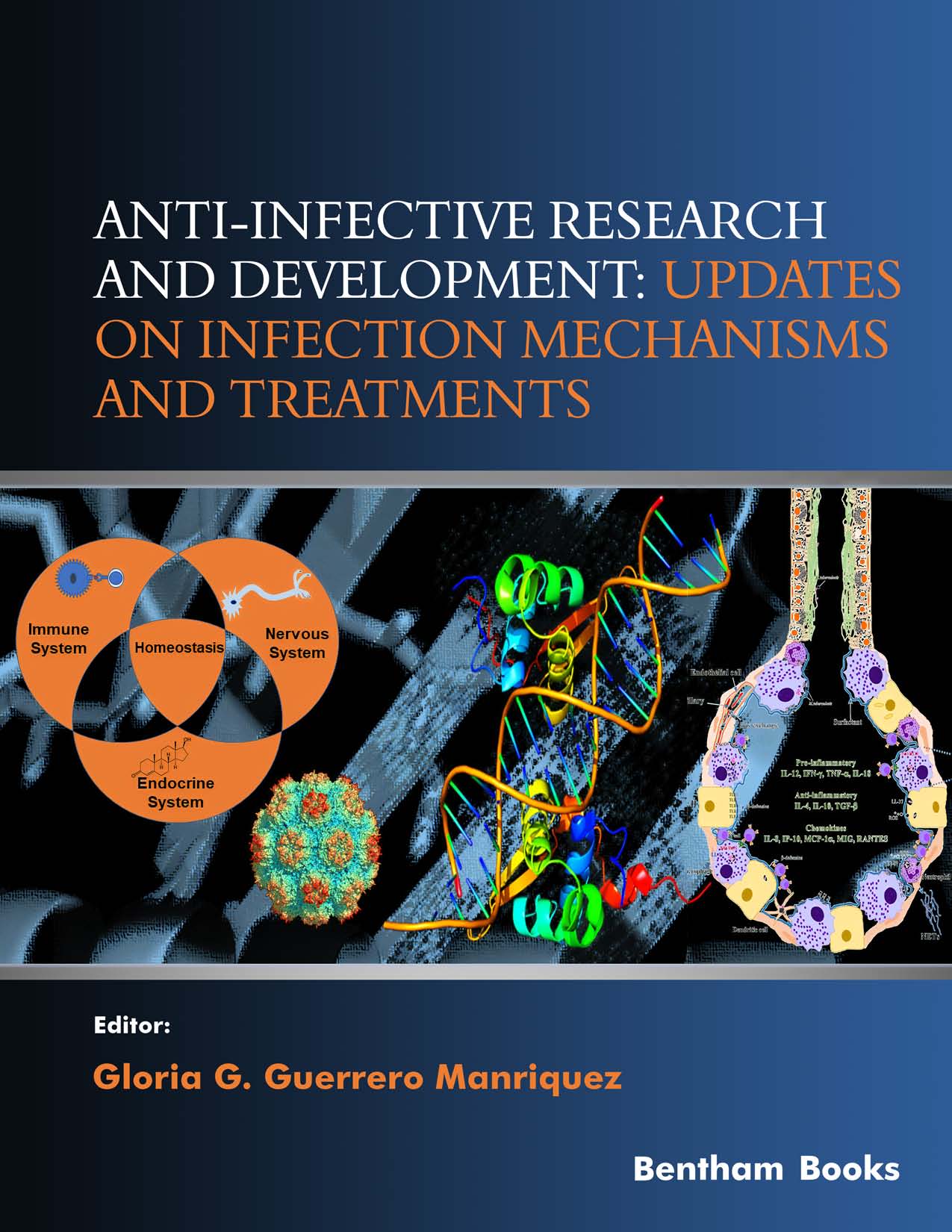A plethora of anti-infective agents is found in nature. Their properties and the mechanism of action are also diverse for treatment and vaccination against intracellular microorganisms (J.M. Favela-Hernandez and G.G. Guerrero). In the last decades, there was an increase in the emergence and reemergence of multi-drug resistant strains. Unfortunately, despite intense efforts, for most of these infectious diseases, there are no safe and effective treatments that are affordable for people in developed countries. Moreover, the pathogens have developed a successful evasion mechanism to survive the host selection pressure at the molecular and neuro-immunological level (A. Montoya Rosales and Noe Macias-Segura). In recent years, it has become evident that there is a connection between the nervous, endocrine and immunologic system that play a key role in the homeostatic control in the presence of different environment stimuli and infectious diseases caused by a virus, bacteria, fungus, and parasites (A. Montoya Rosales and Noe Macias-Segura). For this reason, it is pivotal to continue the search for novel and effective natural products showing an action against tuberculosis to decrease the incidence and prevalence of this pathogen (S. Guzman Beltran, F. Hernandez-Sanchez, and M.O. Barrientos). The innate and cellular immune response to M. tuberculosis infection is characterized, addressing specifically the innate components in the up-respiratory tract (URT), cytokines, antimicrobial peptides’ induction and activation of T cellular responses to promote the clearance of the M. tuberculosis (M.A. Moncada and M.A. Herrera-Barrios). Interestingly the induction of the antimicrobial peptides (AMPs) such as Cathelicidins (LL-37) and β-defensins (HBD-2), represents one of the most promising approach, along with the reactive oxygen species (ROS), to kill intracellular bacteria. Furthermore, the induction of AMPs in response to bacterial stimuli can be enhanced by vitamin D and IFN-γ in several infections (E.L. Carreto-Binaghi and Y. Gonzalez). The deleterious effect of the reactive oxygen species (ROS) can be ameliorated by vitamin D, which at the same time, can regulate nitric oxide (NO), leading to cell integrity protection and an antimicrobial mechanism by the induction of AMPS and autophagy. As a lysosome-based degradation pathway and recycling mechanism of cellular components, autophagy has been proposed as an immunological response to circumvent the escape of bacteria. If this can be approached therapeutically with autophagy inducers (natural products, drugs), is an issue that deserves further clinical consideration (A. Ruiz and E. Juarez).
On the other hand, gastric and peptic ulcers caused by Helicobacter pylori represent a serious health problem due to the increasing evidence that suggests that this gram-negative spiral bacteria predispose to gastric cancer and anemia. The enormous iron requirements of this bacteria can be fulfilled by different human sources. How can this be accomplished? And how this allows the bacteria to survive? Are the subjects of intense research for the clinic and therapeutic implications (T.J. Olivares and J. Mosqueda).
Finally, genomic studies have allowed a step forward in the identification of new genes as candidates vaccines with therapeutic potential against parasites such Apicomplexa protozoan, e.g. Babesia bigemina) of animal organisms, including humans. The understanding and elucidation of the cellular and molecular mechanisms that trigger a protective, immune response, play a key role in eliminating this type of pathogen and, thereby, are fundamental for clinical translation (J. Mosqueda, S. Mejia-Lopez. and U.M.A. Mercado).
In the present book, we aimed to update key aspects of the development and research of anti-infective agents in terms of how they can influence the host response at the pharmacological and immunological level against microbial and parasites infections. Thus, I hope this book can be helpful for readers of different disciplines to get updates on these main aspects.
Gloria G. Guerrero Manriquez
University Autonome of Zacatecas
Unit of Biological Sciences
Zacatecas
México

